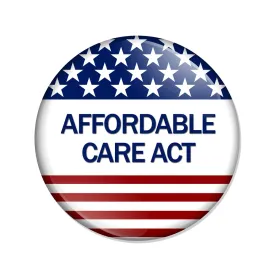As we all know, President Obama signed a massive health care reform bill into law on Tuesday, March 23, 2010. You may also know that the law will likely undergo further changes during the Senate reconciliation process required to adopt certain revisions approved in the House of Representatives. Countless articles have been written as this health care legislation has moved through Congress. In the process, Democrats and Republicans alike have offered their take on the provisions it contains and what they will mean to a variety of constituencies, including employers and their employees. Even so, a great deal of uncertainty remains.
The following timeline addresses many of the immediate questions faced by employers and provides insight into what will happen in the coming months and years. Although some of the legislative changes take effect in 2010, others will be phased in over time, extending as far as 2018 in some instances.
Editor's note: The following is based on public information available as of March 25, 2010. Certain facts may change as a result of the Senate reconciliation process.
Year 2010
- Small businesses with less than 25 employees and average wages of less than $50,000 will qualify for a tax credit of up to 35% of the cost of the health care premiums for workers (effective beginning in calendar year 2010).
- Health plans will not be permitted to exclude children under the age of 19 due to pre-existing medical conditions (effective six months after enactment).
- Health plans will be forbidden from setting lifetime limits on policies (effective six months after enactment).
- Health plans will not be able to cancel policies because an insured got sick (effective six months after enactment).
- Health plans will have restrictions on annual limits of coverage (effective six months after enactment).
- Children up to the age of 26 can remain on their parents' health plan, unless the child is eligible for coverage through an employer (effective 6 months after enactment).
- Seniors will receive $250 to fill the Medicare Part D prescription drug coverage gap, also known as the "doughnut hole" (effective beginning in calendar year 2010).
- High-risk insurance pools will be established for uninsured people with preexisting conditions (effective 90 days after enactment).
- A 10% tax will be imposed on tanning salon customers (effective July 1, 2010).
- New private health plans must cover preventive services with no co-payments or deductibles (effective 6 months after enactment).
- A temporary re-insurance program will be created to help offset the costs of expensive health claims for employers that provide health benefits for retirees age 55 to 64 (effective 90 days after enactment).
- A new independent appeals process will be established to ensure that consumers can appeal decisions by their health insurance plan (effective six months after enactment).
- New health plans will be prohibited from establishing eligibility rules for health care coverage that have the effect of discriminating in favor of higher-wage employees (effective six months after enactment).
- Funding will be increased for community health centers (effective beginning in fiscal year 2010).
- Investment will be made in training programs to increase the number of primary care physicians, nurses and public health professionals (effective beginning in fiscal year 2010).
- Aid will be provided to states to establish health insurance consumer assistance offices to help consumers file complaints and appeals (effective beginning in fiscal year 2010).
Year 2011
- A national, voluntary long-term care insurance program will be created and will be financed by voluntary payroll deductions.
- Health plans in the individual and small group markets will be required to spend 80% of premium dollars on medical services, while plans in the large group market will be required to spend 85%. Failure to meet the thresholds will result in rebates to policyholders.
- A 50% discount will become available on brand-name drugs for Medicare beneficiaries who hit the "doughnut hole."
- Co-payments and deductibles for preventive services provided under Medicare will be eliminated.
- Employers will be required to report the value of health benefits on employee W-2 forms.
- A fee will be imposed on manufacturers and importers of branded drugs.
Year 2012
- The U.S. government will set up a program to create non-profit insurance co-ops.
- Medicare payment reforms will encourage "accountable care organizations."
- A pilot program will be created to test more efficient ways to pay for Medicare.
- Medicare payments to hospitals with high rates of preventable readmissions will be reduced.
Year 2013
- The Medicare payroll tax will increase from 1.45% to 2.35% on individuals with adjusted gross income (AGI) in excess of $200,000 and couples with AGI in excess of $250,000.
- A new 3.8% tax will be imposed on investment income for individuals with AGI in excess of $200,000 and couples with AGI in excess of $250,000.
- Contributions to health care flexible spending accounts will be limited to $2,500 per year.
- The threshold for itemized medical deductions will be raised from 7.5% to 10% of AGI for people under the age of 65.
- A 2.3% tax will be imposed on certain medical device manufacturers and importers.
Year 2014
- Health plans will be prohibited from denying coverage to adults for preexisting medical conditions; therefore state high-risk pools will be phased out.
- Health plans will be prohibited from imposing annual limits on benefits.
- Small businesses with less than 25 employees and average wages of less than $50,000 will be able to qualify for a tax credit of up to 50% of the cost of the health care premiums for workers.
- New health insurance exchanges will be created by the states.
- People earning up to 133% of the federal poverty level ($29,327 for a family of four as of 2009, to be indexed) will qualify for Medicaid. Childless adults will be eligible for the first time.
- People earning up to 400% of the federal poverty level ($88,200 for a family of four as of 2009, to be indexed) will qualify for subsidies on a sliding scale to purchase health insurance through the newly created insurance exchanges.
- Most U.S. citizens will be required to buy health insurance or pay a penalty, except for certain financial hardship cases.
- Employers with more than 50 employees that do not offer health coverage will be fined if at least one employee uses tax credits to purchase an individual plan through an insurance exchange.
- Insurers will not be allowed to charge women higher premiums.
- Health insurers will be required to pay annual fees.
Year 2016
- The threshold for itemized medical deductions will be raised from 7.5% to 10% of AGI for people 65 and over.
Year 2018
- Health plans will be required to eliminate co-payments and deductibles for preventive services.
- A 40% excise tax will be imposed on health insurance plans costing more that $10,200 for an individual or $27,500 for a family, excluding stand-alone vision and dental plans. Higher thresholds will be implemented for certain high-risk industries.
As the landscape of health care reform continues to evolve over the coming months, we will monitor the impact of this monumental legislation and bring new developments to your attention as they occur. In the meantime, please contact your attorney if you have questions about your particular situation.




 />i
/>i
